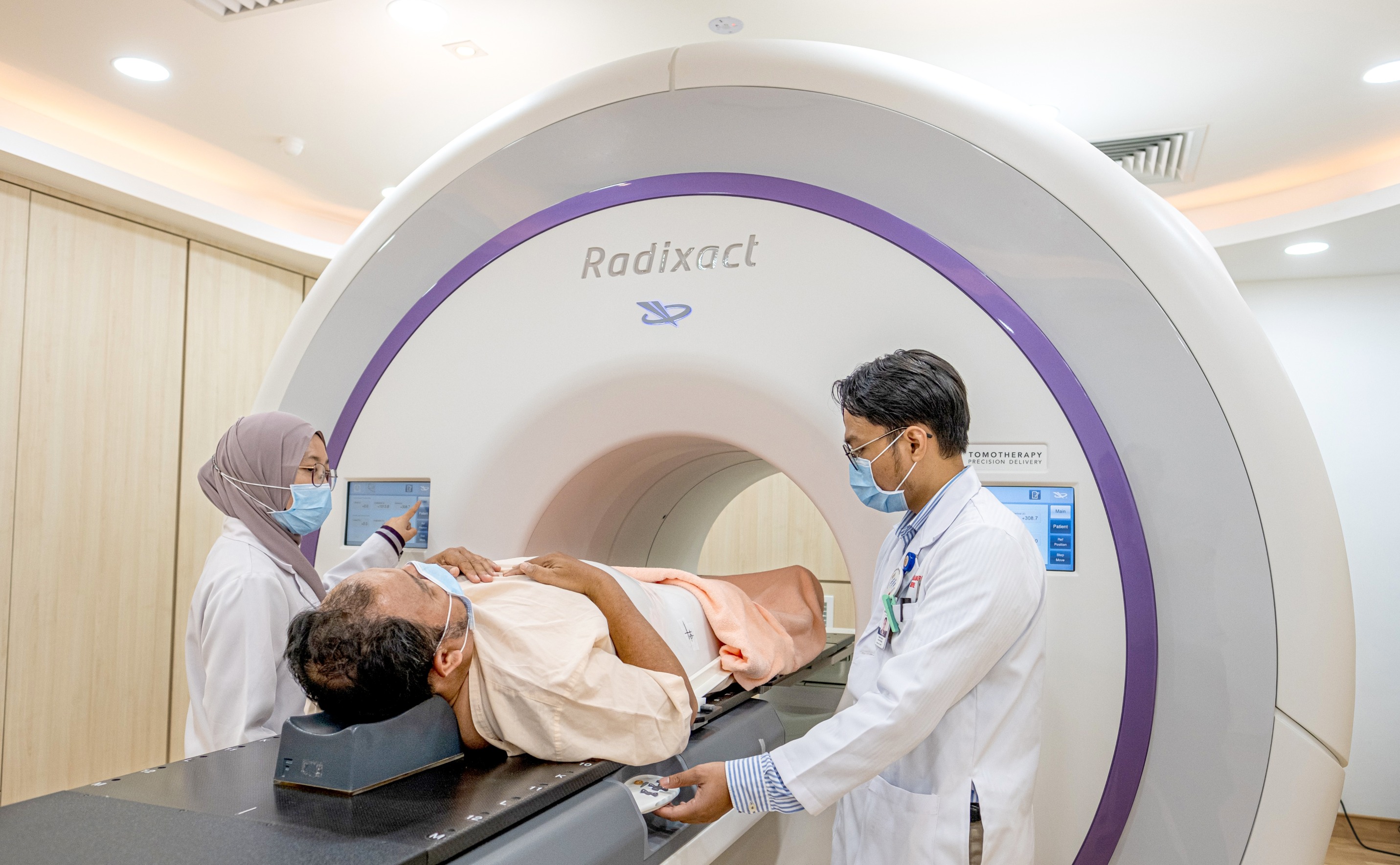
Tomotherapy with Synchrony is an advanced technology that moves together with the patient's lungs or prostate to enable precise delivery of SBRT to the tumour.
Lung cancer is the third most common cancer among men and women in Malaysia. The same goes for prostate cancer, which is also the third most common cancer, with one out of 117 men in Malaysia being at risk of developing it in their lifetime.
Lung cancer is the leading cause of death because 90 percent of patients only detect the presence of cancer at the advanced stage, compared to 10 percent who can detect it at an early stage.
In 2020, there were 48,639 new cases of cancer reported in Malaysia. By 2040, cancer cases in Malaysia are predicted to double, with an average of about one in every 10 individuals in Malaysia being diagnosed with cancer throughout their lifetime.
Someone who has been diagnosed with cancer may question how serious the disease is and whether they can survive. Patients can refer to a prognosis determined by various factors such as the type, location, stage, grade, age, or health status to understand how much the cancer will affect them.
The stage at which cancer is diagnosed plays a crucial role because it affects the survival rate of cancer. Therefore, diagnosing cancer at an early stage is highly encouraged to increase the chances of surviving cancer two to five times more, followed by immediate treatment to optimise cancer management.
Lung cancer is treated in several ways, depending on the type of lung cancer and how far it has spread. Non-small cell lung cancer can be treated with surgery, chemotherapy, radiation therapy, targeted therapy, or a combination of these treatments.
Targeted therapy uses drugs in the form of pills or medications given through veins to block the growth and spread of cancer cells. You will undergo tests to determine whether targeted therapy is suitable for your type of cancer before using this treatment.
However, targeted therapy can be challenging to perform because the lungs typically move when a patient breathes.

"With predictive tracking and high-dose radiation, this innovative system shortens treatment from several weeks to just a few sessions," Dr. Yap shared.
Dr. Yap Beng Khiong, Clinical Oncology Consultant at Subang Jaya Medical Centre (SJMC), shared that Malaysia now has technology that is essentially artificial intelligence (AI) technology driven by adaptive accuracy.
He said the technology, which is only available at SJMC, can adapt to the movement of tumours in real time without the need to add additional treated lung tissue.
"It is called Stereotactic Body Radiation Therapy (SBRT), which is a high-dose radiation treatment that focuses radiation on the tumour while limiting the dose to the surrounding organs.
"Tomotherapy with Synchrony is an advanced technology that moves together with the patient's lungs or prostate to enable precise delivery of SBRT to the tumour.
"With predictive tracking and high-dose radiation, this innovative system shortens treatment from several weeks to just a few sessions," he told BH Online recently.
Dr. Yap said that since the treatment is delivered to a small area, a very high radiation dose can be used, thereby saving lung tissue, and it can be performed in only one to five treatments.
"Depending on the size of the cancer, we usually perform the treatment three to five times instead of the usual six to seven weeks of treatment.
"The treatment can be completed in one to two weeks, which greatly facilitates patients, especially those who live far away, as they only need to come to the hospital a few times," he said.
Regarding prostate cancer, Dr. Yap said that SBRT treatment would be given in five treatments, which is more convenient for patients compared to the 28 treatments in standard treatment.
"We use something called Barrigel, which is a prostate spacer that can be placed to create anatomical suitability and minimise potential side effects of prostate radiation therapy.
"The unique gel formulation gives your doctor real-time control during placement, resulting in a more personalized and complete fit for the patient," he said.
He said that Tomotherapy and Synchrony technology allows the AI machine to track the prostate in real time.
"AI can track the prostate because it follows the fiducial markers we place inside the prostate. When the prostate moves forward, the AI adjusts accordingly," he said.
Sharing the story of Malaysia's first lung cancer patient who underwent SBRT treatment using Radixact X9 Tomotherapy with Synchrony at SJMC, Razak, 64, Dr. Yap said that Razak received positive results and subsequently underwent CT scans every six months.
"Razak only needs to lie down and focus on his breathing for half an hour. His experience with Tomotherapy with Synchrony has been very positive.
"After his first session, he didn't feel any pain and experienced only minor discomfort. Fatigue is the most noticeable side effect, consistent with the assurance during the consultation session," he said.
Source
